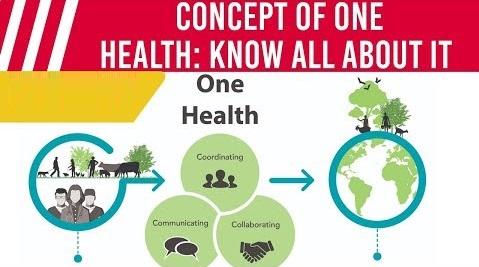Table of Contents
Outbreaks of Zoonotic Diseases
- Widespread prevalence of avian influenza in poultry, or bird flu
- It was concern for human health that prompted the extreme reaction
- Similarly in 2003, SARS or Severe Acute Respiratory Syndrome emanated suddenly in China and vanished soon.
Panic all around
- These outbreaks culminated emergency response
- Panic spread much faster than the virus.
- These events also brought forth the hitherto forgotten philosophy of One Health.
- Inter-connectivity among human health, the health of animals, and the environment.
One Health concept
- The World Organization of Animal Health, commonly known as OIE (an abbreviation of its French title), summarizes the One Health concept.
- It says that as “human health and animal health are interdependent
- All aspects of patients’ lives need to be considered including their environment; disease was a result of imbalance between man and environment.
- So One Health is not a new concept
Rise in outbreaks
- Greater contact with domestic and wild animals
- Climate change, deforestation and intensive farming
- According to the OIE, 60% of existing human infectious diseases are zoonotic
- Of the five new human diseases appearing every year, three originate in animals.
- It is estimated that zoonotic diseases account for nearly two billion cases per year
Care Required
- Humans require a regular diet of animal protein.
- This calls for strict health surveillance
- Thus, loss of food animals on account of poor health or disease too becomes a public health issue .
Global health
- The WHO was set up in 1948 to, among other objectives; promote cooperation to control human diseases.
- The cooperation and collaboration among nations to control and contain animal diseases
- This has been recognised as early as in 1924
- India has been at the forefront
India
- The size of India’s human and animal populations is almost the same
- A network of 1.90 lakh health institutions
- On the other hand, only 65,000 veterinary institutions tend to the health needs of 125.5 crore animals
Animal health system
- Private sector presence in veterinary services is close to being nonexistent.
- Unlike a physician, a veterinarian is always on a house call
- There could not be a stronger case for reinventing the entire animal husbandry sector to be able to reach every livestock farmer
- Early detection at animal source can prevent disease transmission to humans and introduction of pathogens into the food chain.
Way Forward
- Developing countries like India have much greater stake in strong One Health systems on account of agricultural systems
- Strengthening veterinary institutions
- Control zoonotic pathogens at their animal source.
- It calls not only for close collaboration at local, regional and global levels among veterinary, health and environmental governance, but also for greater investment in animal health infrastructure.






















 WhatsApp
WhatsApp